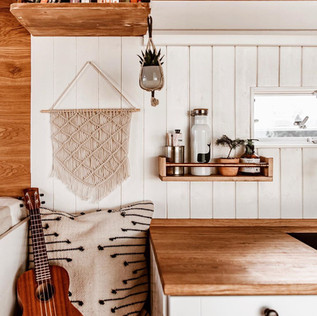
Independence, freedom and a slow life. Three aspects that accompanied our journey from the beginning. The vast majority were sleeping in a car or under a tent. By buying a van, we wanted to add two more - comfort and warmth. And because the classic built-ins of motorhomes didn't appeal to us in any way, and the internet is full of incredibly beautiful and inspiring hand-made interiors, it was decided.

But it was not a challenge for us, for a simple reason - we had no idea what we were getting into. From the originally planned five months, the reconstruction took us to a beautiful 13. But in retrospect, we evaluate it positively. Tracing with an incompletely completed van allowed us to pick up various shortcomings "during operation" and adjust the details according to our new style of travel, which we have just discovered.

We were the first to create a wooden structure around the perimeter walls to attach all the furniture and floorboards. We filled it with hemp insulation. We lined the walls and ceiling with wooden planks and planks. We attached water, electricity and gas lines to the walls and floor and arranged sockets, switches and lights. The most important thing was to secure and correctly calculate the energy requirements - the performance of solar panels, batteries, inverters and the possibility of water heating. All these technical issues can already be beautifully traced on YouTube or in various nomadic groups on Facebook.

In the end, furniture was made, tailor-made by our favorite carpenter. Finally, the most pleasant part of the reconstruction, when the van became a home. The van was given a soul and was officially christened Nom - a good van with good karma. We share her story, experiences and tips on the beautiful places she discovers with you on Instagram ( @Nomathehappyvan ).








Comments